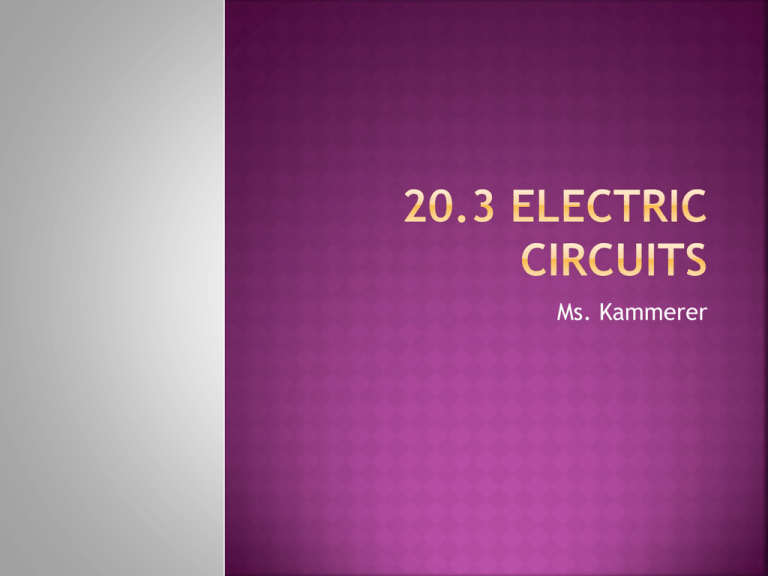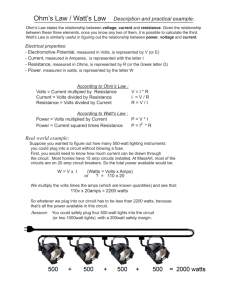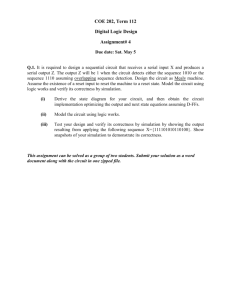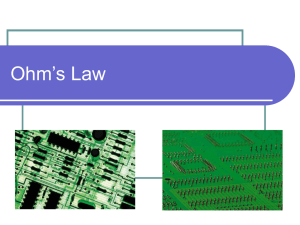Electric Circuits: Series, Parallel, Power & Safety
advertisement

Ms. Kammerer An electric circuit is a complete path through which charge can flow. Symbols are used to represent parts of a circuit Source of electrical energy Devices that are run by the electrical energy Switches are places where the circuit can be opened. If the switch is open, the circuit is not a complete loop, current stops When the switch is closed, the circuit will resume flow Direction of current is the direction in which positive charges flow Charge has only one path it can flow. If one element stops functioning in a series circuit, none of the elements can operate. What are sources of resistance? An electrical circuit with two or more paths through which charges can flow Power is the rate of doing work Electric power is the rate at which electrical energy is converted to another form of energy Unit is watt (W) Electric Power P(watts) = I (amps) x V (volts) 1. A clothes dryer uses about 27 amps of current from a 240-volt line. How much power does it use? P = I x V = (240V)(27A) = 6500 W A camcorder has a power rating of 2.3 watts. If the output voltage from its battery is 7.2 volts, what current does it use? I = P/V = (2.3W)/(7.2V) = 0.32A A power tool uses about 12 amps of current and has a power rating of 1440 watts. What voltage does the tool require? V = P/I = (1440 W)/(12 A) = 120 V E =Pxt Correct wiring, fuses, circuit breakers, insulation, and grounded plugs help make electrical energy safe to use. All wires must be able to carry max expected current “Blowing a fuse”- a wire will melt if too much current passes through it A circuit breaker is a switch that will open when current is too high Grounding – the transfer of excess charge through a conductor to Earth











